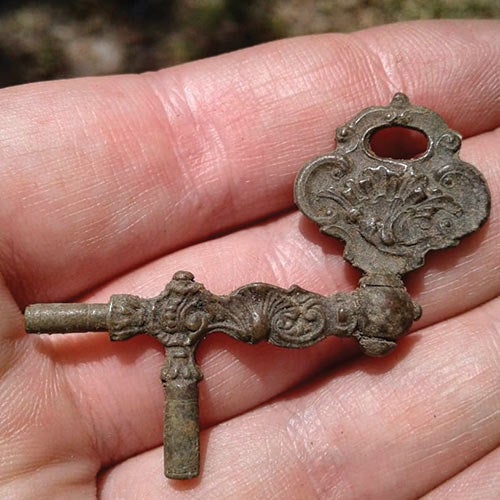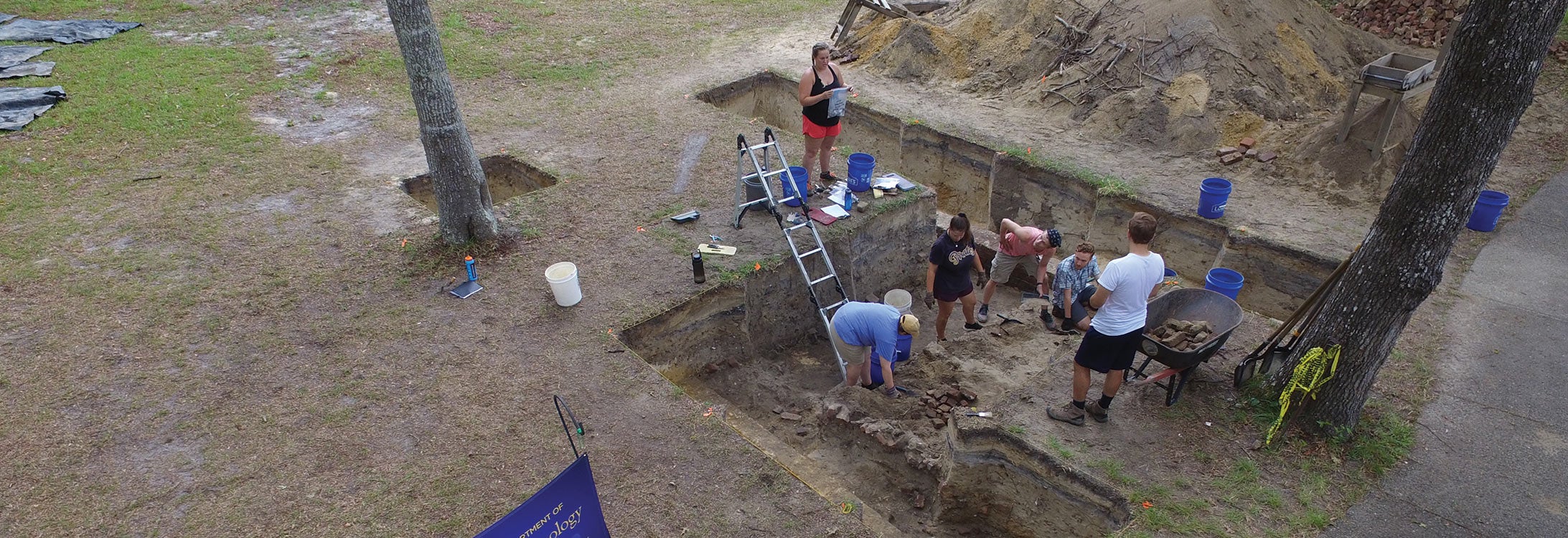Sedition and whiskey
Students unearth tavern near Southport
Decades before Americans fought taxes in the Whiskey Rebellion, colonists apparently drank whiskey and talked rebellion in a southeastern N.C. tavern ECU students uncovered this summer.

A pocket watch winder ECU students found at Brunswick Town.
Last year at the ruins of Brunswick Town — a once-thriving colonial port burned by British soldiers in 1776 — ECU doctoral student Matt Harrup used ground-penetrating radar to discover the remains of the tavern on the west bank of the Cape Fear River off N.C. 133 between Wilmington and Southport.
The tavern was buried under 5 feet of earth on a spot of land that should have been empty, according to historic maps of the town. After ECU students on a summer field class excavated it, experts said the building probably burned down years before Brunswick Town proper, its walls caving in to seal artifacts from 1760s America.
“It’s something every archaeologist hopes to find,” Charles Ewen, an ECU professor of anthropology and project supervisor, told the Raleigh News & Observer. “It’s a snapshot in time. Everything there got trapped.”
Ewen said the artifacts are like a “time capsule” of the old port’s history, including a connection to early American resistance to royal rule: a glass cufflink, thought at first to be a pebble, etched with the words “Wilkes and Liberty 45.” Student Adam Pohlman found the piece of glass and smartly set it aside for further examination.
The Colonial Williamsburg Foundation says Wilkes was an Englishman idolized by Americans at the time. The number 45 refers to a notorious Wilkes pamphlet saying the king was not above reproach, according to the foundation.

A glass cufflink, thought at first to be a pebble, etched with the words “Wilkes and Liberty 45.”
“Brunswick Town was a hotbed of sedition, being among the first to oppose the Stamp Act, and what better place than a tavern to find confirmation of these sentiments?” Ewen said. “Maybe it was something under the radar. They weren’t outright denouncing the government, but maybe wearing these cufflinks let you know who was on your side.”
Ewen said the 15-by-25-foot tavern could have been active from the 1740s to the 1760s before burning. An Irish halfpenny, dated 1766, found at the site might suggest how late the building was there.
Master’s students Kimberly Byrnes and Brandon Eckert supervised the 10 undergraduates who worked on the site. Among other artifacts, they found nails, shards of Delft china and the winding key and glass from a pocket watch, Ewen said.
Work will continue next summer to locate the building’s chimney, he added.
